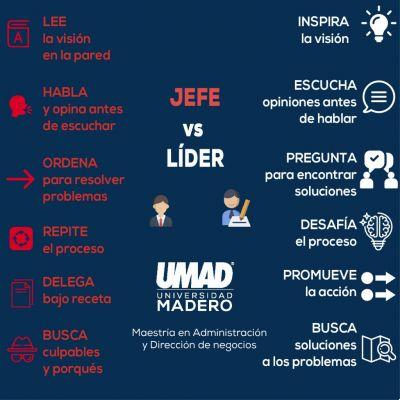To change your attitude, you have to resort to different techniques that place the emphasis on the consolidation of certain behaviors. In this article we talk about the most important techniques.

Last update: December 27, 2019
The psychological techniques useful to change attitude yes they are based on a theoretical and methodological orientation of intervention. Based on experimental psychology, they are based on the idea that normal and abnormal behaviors are governed by the same principles.
Changing attitude involves procedures and techniques subject to objective evaluation and empirical verification, in order to reduce or eliminate maladaptive behaviors and to initiate or encourage behaviors that are not. We focus not only on observable behaviors, but also on cognitive aspects and on basic mechanisms involved in their origin, development, maintenance and modification.
The techniques for changing attitudes can be classified into three groups: introducing a conduct, improving a conduct and reducing the frequency of a conduct. In this article, we will focus on psychological techniques that are meant to improve conduct.
Among the psychological techniques to improve behavior we can use reinforcement techniques, contingency bargaining and the Token Economy (or token economy).
Positive and negative reinforcement techniques to change attitudes
Positive reinforcement
A positive reinforcement is a stimulus whose contingent presence in a behavior results in its improvement or maintenance. The term "contingency" refers to the relationship of dependence between a behavior and the stimuli that precede and / or follow it.
Negative reinforcement
Negative reinforcement consists of revoking or reducing a hypothetical adverse stimulus or preventing the loss of positive reinforcement contingent on a behavior. The goal will be to intensify or maintain it. We can distinguish two types of negative reinforcement: escape or avoidance.
- Leakage. It consists in revoking or reducing the presence of an alleged adverse stimulus or in ending a positive reinforcement in a contingent way to a behavior.
- Avoidance. It consists in presenting a presumed adverse stimulus or in revoking a presumed positive reinforcement, contingent on the non-expression of a behavior. It intensifies or is maintained because it prevents or postpones a conduct in a contingent way. In this way, it intensifies or maintains itself precisely because it contingently prevents or postpones the onset of adverse stimuli or the loss of positive reinforcement.
Changing attitudes and contingency bargaining
Contingency bargaining is a contract or agreement between two or more parties which establish individual responsibilities based on a specific object or activity. Characteristics of contingency bargaining are:
- Granting rewards for getting closer to the expected behavior.
- Rewards must be frequent, but in small quantities.
- Bargaining must demand but also reward successes.
- Bargaining must be approved by both parties.
- The terms within which it is established must be clear.
- Bargaining must be negotiated and the parties must agree freely.
- It must clearly specify the ideal conduct and what the expected reward.
- The reinforcement must be proportional according to the terms of the contract.
Types of contingency bargaining
There are cases where the presence of inappropriate behavior comes mainly from one side, but there are also many where the problematic behavior comes from both sides. Two types of bargaining are used: quid pro quo and parallel or in good faith.- Quid pro quo or exchange negotiations. One party agrees to do something in exchange for a certain behavioral change on the other side. For example, a husband may want to cook dinner with his wife as long as she takes him 20 minutes a day to talk about her work.
- Contracts in parallel or in good faith. Changing attitude has consequences, so this type of contract eliminates the problem of who should start changing their behavior first. Facilitates reinforcement for the party doing it, even if the other party doesn't do the same. There is a lack of evidence to determine which of the two types of contract is more effective.
Changing attitude through the Token Economy
Another psychological technique to change one's behavior is the Token Economy. It mainly consists in delivering tokens (points, vouchers, signals, stars, etc.) in a contingent way with respect to the execution or not of certain behaviors. These tokens can be exchanged for a wealth of goods, activities and privileges (support reinforcements).
- Benefits. Tokens can be used immediately and this generally does not interfere with the expression of the expected behavior. They establish the bridge between expected behaviors and the use of supportive reinforcements. The latter are not very vulnerable to satiety effects and their number offers a tangible demonstration of the improvement obtained (feedback).
- Limits. The procedure can get quite complex. Physical tokens can be stolen, forged or loaned out. A person's groupmates may refuse to work if they are not included in the program, etc.
Token ownership
It is possible to assign the value of tokens to points, vouchers, stars, plastic chips, etc. A valuable token should have the following properties:
- Its value must be easily understood.
- It must be easy to use.
- Be easy to carry.
- Being able to be identified as property by the recipient (to avoid the "black market" of tokens in groups).
And then…
- Request a minimum accounting by those who take care of their delivery.
- It must be a source of minimal distraction. Dots or punctuation are the elements that best meet these criteria. For this reason, with people who understand their meaning, it is better to use the points of the tokens, unless the latter are particularly stimulating for them.
The person acquires the value of the tokens through verbal explanations. The goal is that the behaviors are maintained through the natural reinforcements of the context and / or through intrinsic reinforcements. To do this, the coin economy can be combined with other techniques, such as social skills entertainment or problem solving.


























